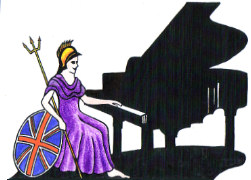Teachers, Accompanists and Piano Entertainers in the UK

UK Piano Page

152 - 160 Wardour Street
Soho, London W1F 8YA
England
For nearly two hundred years we have sold upright
184 St. Ann's Road
Haringey, London N15 5RP
England
J. Reids supply new and fully restored pianos from
Russell House
Grove Hill Road
Royal Tunbridge Wells, Kent TN1 1RZ
England
Covering Kent, Sussex and Surrey from stores in
C/O Unit 4 Pantheon Park, Wednesfield way
Wolverhampton, West Midlands WV11 3DS
England
Donner is a musical instrument online store.
Rookery Farm
Radstock, Somerset BA3 4UL
England
Abbey Piano Services is run by a small team of
Music Festival for performers and guests Our 10th
18-06-2022 01:30PM
The Morecambe Bay Piano Group was set up to extend
11-12-2021 02:00PM
The Morecambe Bay Piano Group was set up to extend
08-01-2022 02:00PM
The Morecambe Bay Piano Group was set up to extend
12-02-2022 02:00PM
French Polishing and Pianos
French polishing is a wood finishing technique used on pianos that result in a very high gloss finish, with a deep colour and chatoyancy. French polishing consists of applying many thin coats of shellac dissolved in denatured alcohol using a rubbing pad lubricated with one of a variety of oils.
French polishing became prominent in the 18th century. In the Victorian era. There are some references to shellac in Europe as early as 1590, French polishing was most commonly used on expensive woods such as mahogany or walnut in order to preserve their beauty. Commonly French polished items at the time were impressive pieces of furniture or instruments because they were expected to look good at all times. The Pad is lubricated with oil that then becomes part of the overall finish. the oil helps to stop the pad from sticking and lifting previously applied layers of shellac. , Softer oils such as mineral oil will produce a glossier but less hard finish whereas more viscous oils such as walnut oil and olive oil will produce a more durable finish.
Cleaning French Polish and Pianos
If the item has been French polished, rubbing the surface with a soft, clean cloth is usually ample. You can also polish it now and then with a little wax or even with a tiny bit of furniture cream. Sticky marks should be removed immediately with a cloth soaked in warm, soapy water and then wrung out it needs to be damp, not soaking wet.